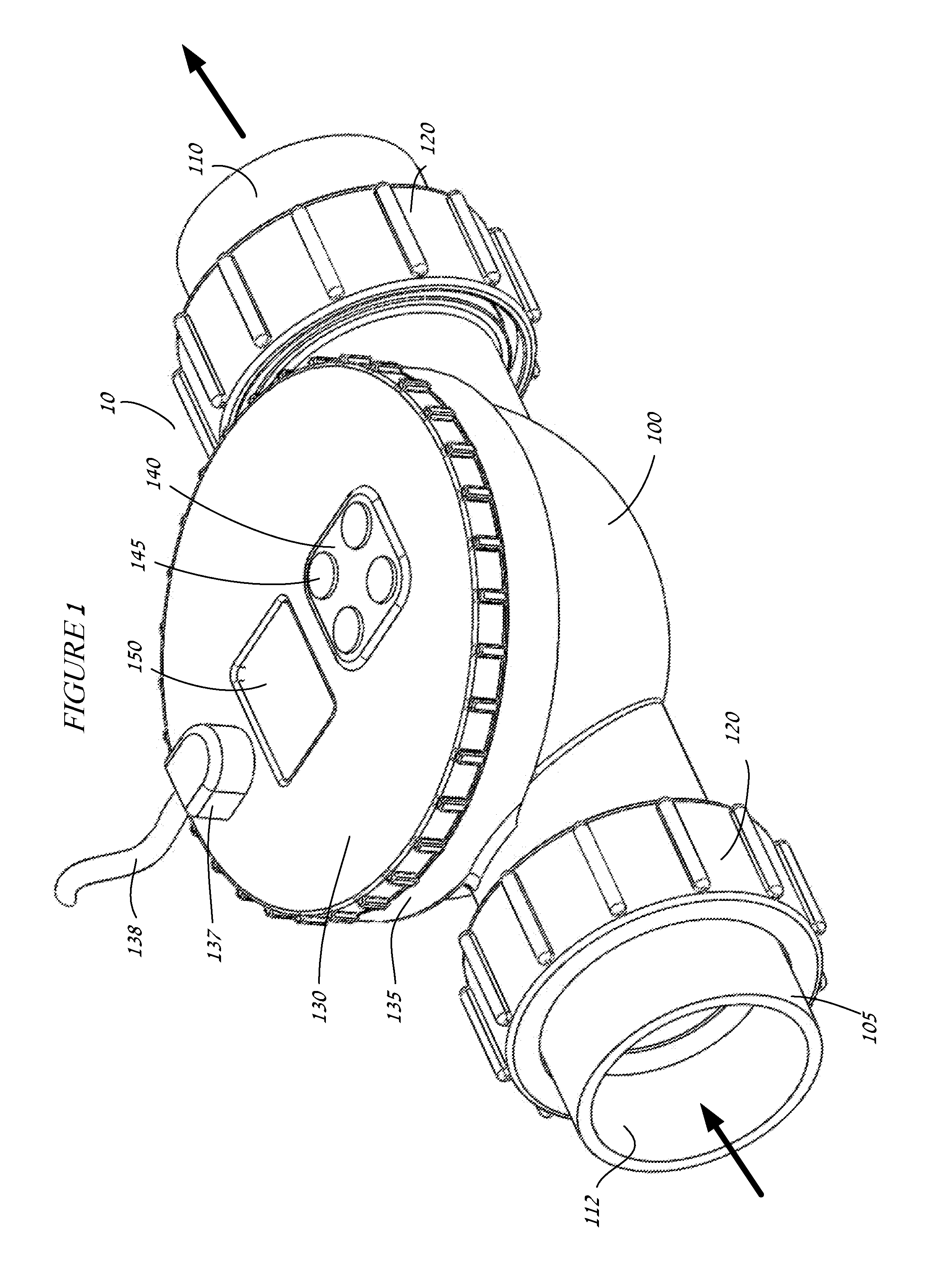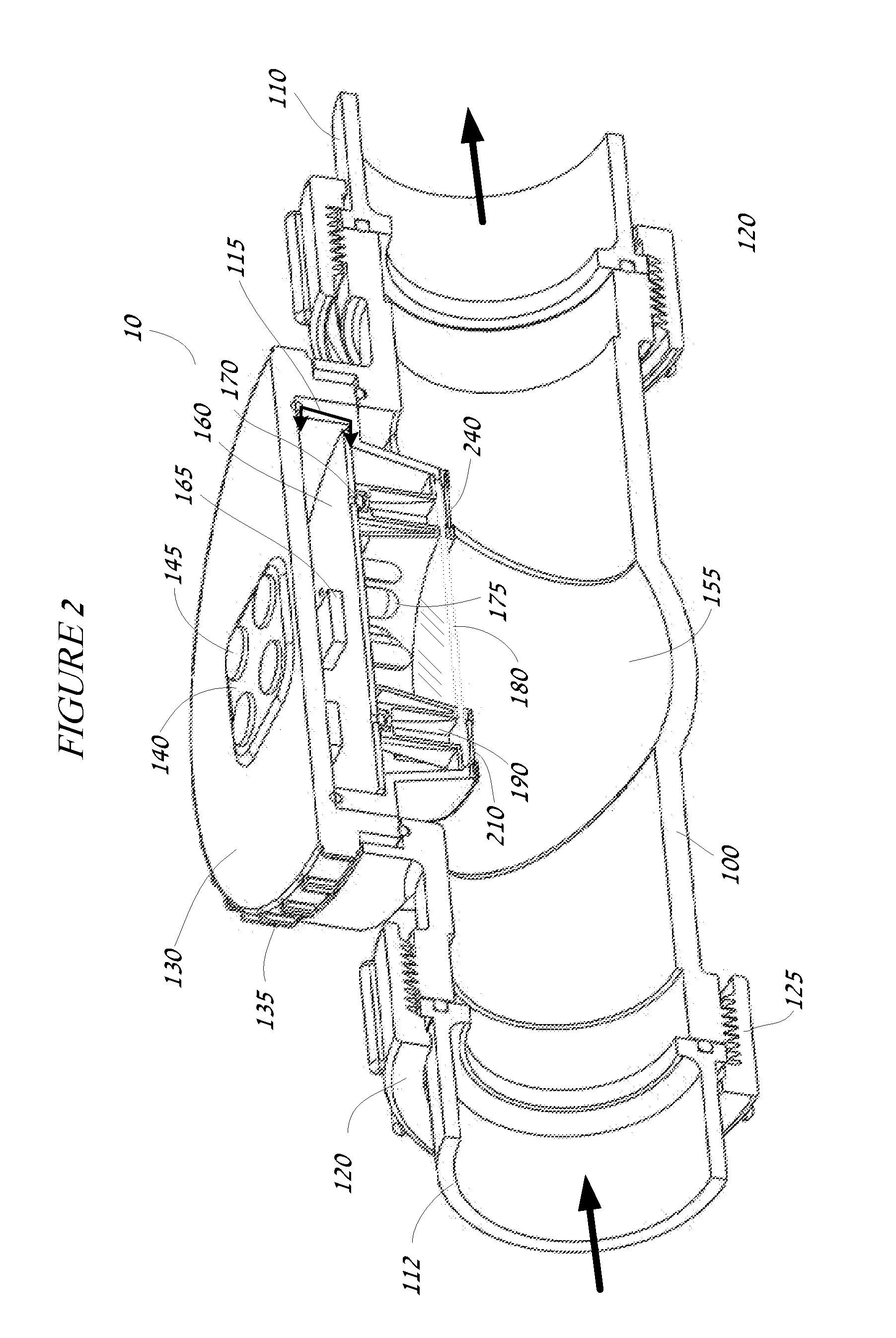Chemical sensing apparatus having multiple immobilized reagents
a technology of immobilized reagents and sensing apparatuses, which is applied in the field of chemical sensing apparatuses having multiple immobilized reagents, can solve the problems of non-linear ph reporting, inability to effectively sensing the concentration of analytes, and the tendency of liquid and gel filled electrodes to bleed or leak out solutions, etc., to achieve more analytes, more accurate, and more cost-effective effects
- Summary
- Abstract
- Description
- Claims
- Application Information
AI Technical Summary
Benefits of technology
Problems solved by technology
Method used
Image
Examples
Embodiment Construction
[0066]The instant invention is directed generally to a sensor system for a water treatment system having a housing that utilizes a sensor system which includes at its core a sensor target with an immobilized reagent entrapped in a molecular matrix which is capable of interacting with a reactant / analyte substance in concentration in the water of the water treatment system This entrapped reagent removes issues with corrosion, labor, maintenance, accuracy, repeatability, and lowers costs to sense parameters currently requiring a great deal of manual labor and attention. In addition, although the system can operate to sense a single parameter, the system can also be configured to sense multiple parameters. Thus, an exemplary embodiment includes elements capable of interacting and thereby sensing and reporting multiple variables for the water treatment system. The result would be a system capable of replacing a number of existing sensors, including for instance salinity, temperature, dis...
PUM
| Property | Measurement | Unit |
|---|---|---|
| light energy | aaaaa | aaaaa |
| energy | aaaaa | aaaaa |
| organic | aaaaa | aaaaa |
Abstract
Description
Claims
Application Information
 Login to View More
Login to View More - R&D
- Intellectual Property
- Life Sciences
- Materials
- Tech Scout
- Unparalleled Data Quality
- Higher Quality Content
- 60% Fewer Hallucinations
Browse by: Latest US Patents, China's latest patents, Technical Efficacy Thesaurus, Application Domain, Technology Topic, Popular Technical Reports.
© 2025 PatSnap. All rights reserved.Legal|Privacy policy|Modern Slavery Act Transparency Statement|Sitemap|About US| Contact US: help@patsnap.com



